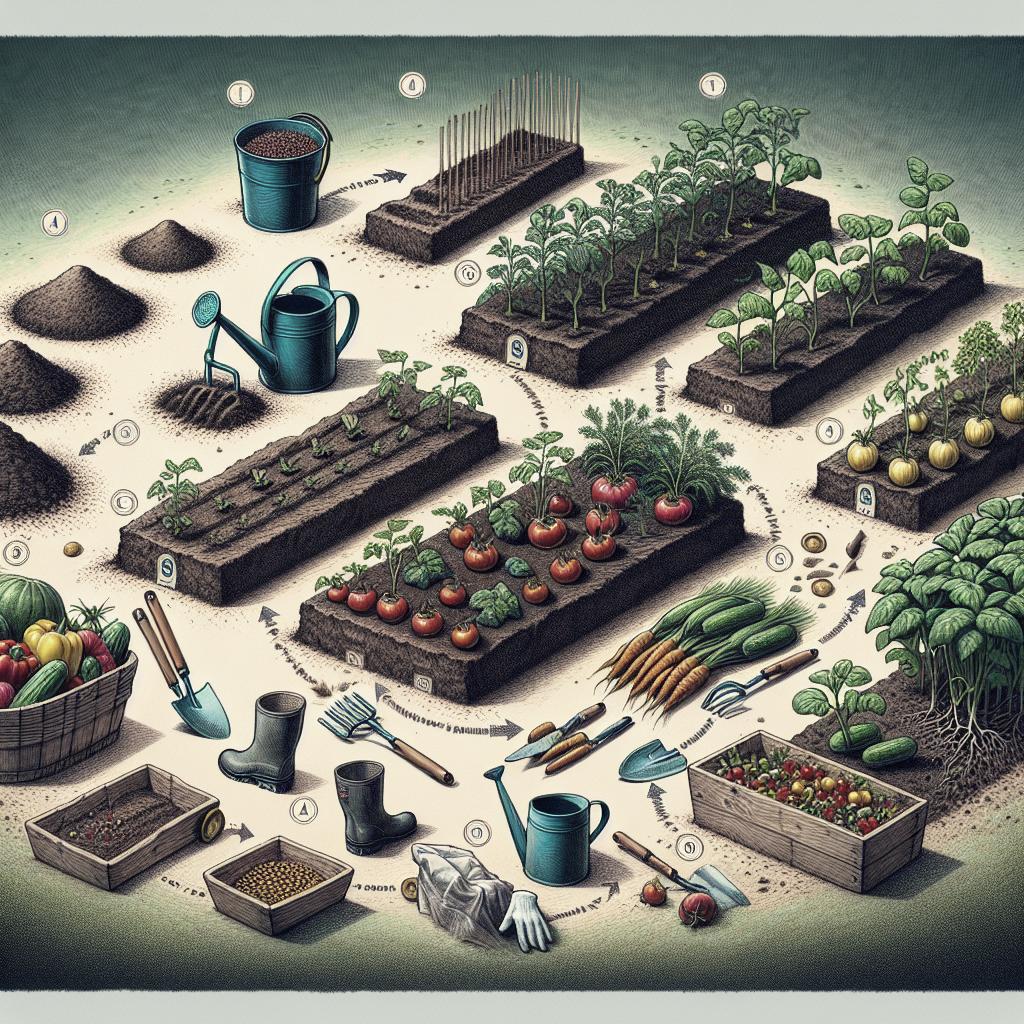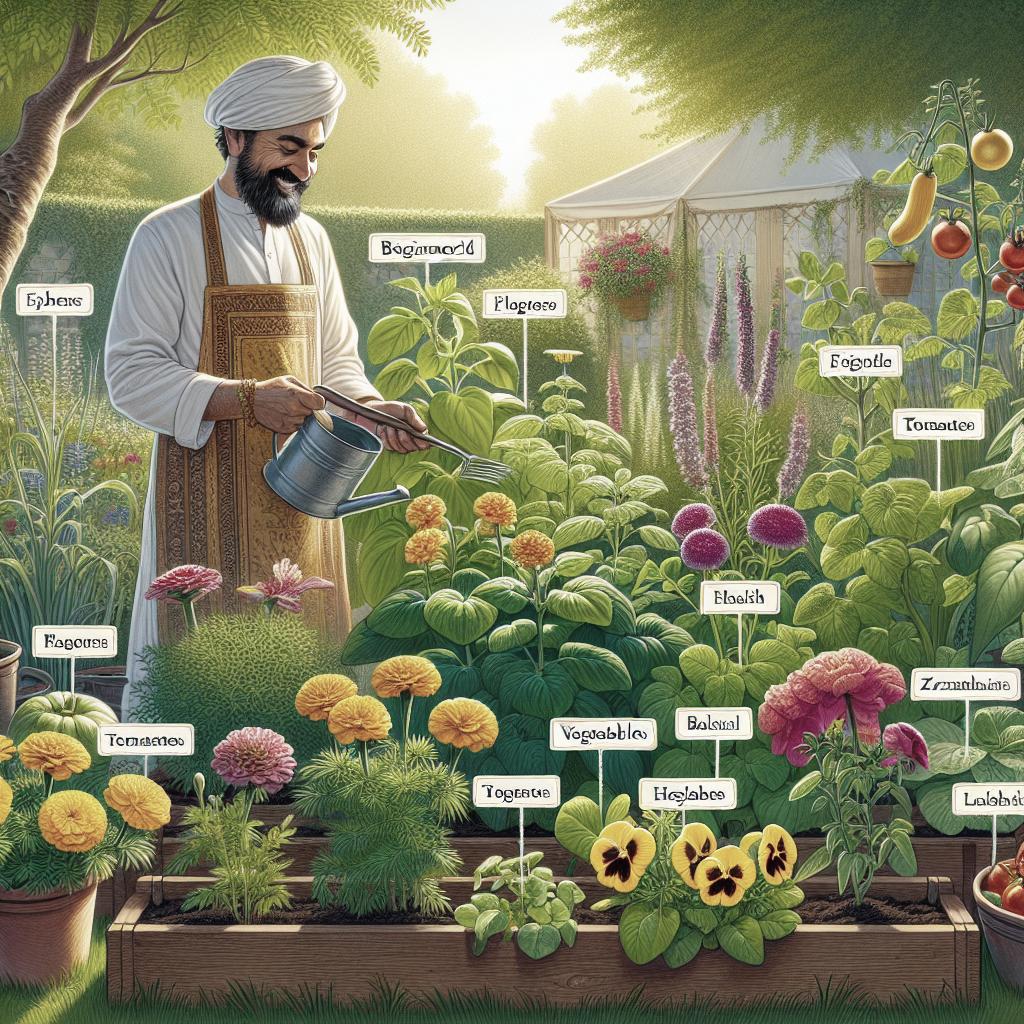“`html
The Basics of Water Gardening
Water gardening, a captivating extension of traditional gardening, brings the serenity of aquatic ecosystems into your own backyard. This guide explores essential facets of water gardening, from defining what a water garden is to the plants that flourish in such environments. You’ll discover actionable insights on how to build and maintain your own water garden and tackle common concerns like mosquito attraction and algae management. Whether you’re a novice or seasoned gardener, this information will help transform your space into a tranquil oasis, with helpful tips on when to seek professional landscaping services.
What is a Water Garden?
A water garden is a designed landscape feature that cultivates aquatic plants for aesthetic purposes, tranquility, and habitat creation. Often characterized by shallow ponds, these gardens offer an oasis for wildlife and a soothing retreat for humans. The versatility of water gardens means they can fit in diverse spaces, from expansive estates to cozy urban backyards.
Unlike traditional gardens that rely on soil, water gardens focus on water as the primary medium for cultivating plants. This method introduces a refreshing dynamic to gardening, creating visual interest through mirrored water surfaces and the gentle movement of aquatic plants. Water gardens can also incorporate various elements, including fish, rock formations, and waterfalls, enhancing their sensory appeal.
What Plants are in a Water Garden?
Floating Plants
Floating plants are quintessential to water gardens, providing surface coverage and shade that helps maintain water temperature and block excessive sunlight, which prevents algae overgrowth. Popular floating species like water lilies and duckweed are not only aesthetically pleasing but also create habitat conditions favorable to pond animals.
These plants require minimal maintenance, as they draw nutrients directly from the water. Their presence contributes to the ecological balance, using up nutrients that might otherwise fuel unwanted algae proliferation. Floating plants add a dynamic, ethereal touch to the water garden’s surface.
Oxygenating Plants
Oxygenating plants are submerged species vital for maintaining water garden health by regulating oxygen levels and keeping water clear. Common choices include hornwort and elodea, which grow below the surface and generate oxygen through photosynthesis.
Such plants play a crucial role in supporting aquatic ecosystems, aiding in waste decomposition and providing shelter for aquatic life. By incorporating oxygenating plants, you promote a self-sustaining environment that minimizes the need for mechanical filtration.
Marginal Plants
Marginal plants thrive at the water’s edge, straddling both aquatic and terrestrial environments. Examples include cattails and irises, which have roots submerged and foliage above the water. This placement maximizes nutrient absorption while contributing to the garden’s visual structure.
These plants are essential for creating a seamless transition between the aquatic and land components of your water garden. Their presence enhances biodiversity, supporting both aquatic and terrestrial species.
Bog Plants
Bog plants prefer consistently moist environments, making them ideal for the edges of water gardens or dedicated bog areas. Species such as pitcher plants and marsh marigolds thrive in nutrient-rich, waterlogged soil.
Their vivid blooms and unique foliage add texture and color, creating a captivating border around your water garden. Beyond aesthetics, bog plants can filter water and provide a microhabitat for various creatures, enhancing the overall richness of your garden ecosystem.
How to Build a Water Garden
Containers
Water gardens need not be expansive; even a modest container can become an aquatic paradise. Use pots or barrels to create container water gardens, perfect for patios and small spaces. Ensure the selected container is watertight and suitable for the desired plants and any fish.
Consider the container’s depth and diameter as key factors in accommodating a range of plant types. Adding a few rocks or pebbles can improve aesthetics while providing habitat for beneficial microorganisms.
Pumps
Pumps are pivotal in circulating water, ensuring adequate oxygenation, and preventing stagnation. Choosing the right pump depends on your water garden’s size, design, and the presence of fish or additional water features such as fountains.
A consistent flow diminishes mosquito risks and maintains a balanced aquatic environment. Regular maintenance of the pump ensures longevity and optimal performance.
Water Features
Incorporating water features like fountains and waterfalls elevates the sensory experience of your garden, offering visual movement and calming sounds. When selecting features, consider scale, aesthetics, and how they harmonize with existing elements.
Water features contribute to oxygenation and assist in water circulation, supporting the overall ecosystem health. A carefully chosen feature can become a focal point, drawing attention and enhancing the garden’s ambiance.
Fish
Fish, such as koi or goldfish, can be a lively addition to any water garden, adding both color and movement. When adding fish, ensure your water garden has sufficient depth and oxygen levels to support aquatic life.
Fish can help control insects and algae naturally. It is important to gradually introduce fish to the garden and monitor their growth and health, ensuring compatibility with your garden’s ecosystem.
How to Maintain a Water Garden
Manage Debris
Regularly clear debris, dead leaves, and plant matter from your water garden to prevent water quality deterioration and algae overgrowth. Strategically placed netting can capture falling leaves during autumn.
Manual skimming and filtration systems aid in maintaining cleanliness, keeping the water clear and healthy for aquatic life.
Encourage Plant Growth
Promote the growth of your aquatic plants by optimizing sunlight exposure and regularly pruning overgrown foliage to prevent overshadowing. Thriving plants bolster ecological balance, utilizing excess nutrients naturally.
It is essential to monitor plant health and density, making necessary adjustments through plant thinning or introducing new species as needed.
Remove Dead Plants
Removing dead or decaying plants is crucial to maintaining water health, as decomposition can rapidly consume oxygen and release harmful toxins into the water, impacting aquatic life.
Inspect your water garden frequently for signs of distress or decay and promptly remove affected plants to safeguard the ecosystem.
Add Fertilizer (the Right Kind) as Needed
Fertilizing is essential for plant health, especially during peak growing seasons. Choose aquatic plant fertilizers, preferably slow-release, to provide nutrients without promoting algae growth.
Carefully follow dosage instructions to avoid water contamination while supporting robust plant development and flowering.
Winterize Your Water Garden
Prepare your garden for winter by placing delicate plants in a greenhouse or below the frost line. For containers, move them indoors or insulate them against freezing temperatures.
Reduce feeding fish and trim plants back to minimize decay, keeping your garden in shape to rejuvenate when warmer weather returns.
Check for Leaks
Regular inspections of your water garden’s structure can help detect leaks early, preventing excess water loss and maintaining desired water levels.
Pay close attention to liner integrity and joint seals, remedying any identified issues with appropriate sealing materials promptly.
FAQ about Water Gardens
Will my water garden attract mosquitoes?
Mosquitoes may find water gardens attractive, but proper water circulation and the presence of predators like fish can mitigate their presence. A functioning pump or water feature deters mosquitoes by moving water.
Regularly inspect for mosquito larvae and use eco-friendly control measures if needed, ensuring your garden remains a serene retreat without pest issues.
Why are algae harmful to my water garden?
Unchecked algae growth consumes oxygen and blocks sunlight, which can suffocate beneficial aquatic plants and animals. It rapidly deteriorates water quality, leading to unsightly green water and unpleasant odors.
Regular maintenance, including plant management and water circulation, helps control algae naturally, preserving your garden’s beauty and ecological balance.
Are some water garden plants invasive?
Some plants, like water hyacinths and certain reed species, can be invasive, rapidly overtaking small ponds and disrupting local ecosystems. Research plant behavior before introducing them to your garden.
Select native and non-invasive species to promote biodiversity while respecting local environments and ensuring long-term sustainable gardening.
When to Call a Professional Landscaper
Sometimes managing a water garden requires professional landscaping expertise, especially when dealing with extensive ecosystems, complex structural repairs, or advanced water features. Landscapers can provide tailored solutions and insights on sustainable practices.
Consider consulting a professional if you’re unsure about certain aspects of design, installation, or ongoing maintenance to ensure your garden flourishes without unexpected setbacks.
Water Gardens are Relaxing — and Fairly Easy to Build and Grow
Related Posts
Explore other articles to enhance your gardening endeavors, such as tips on creating pollinator-friendly gardens, sustainable landscaping practices, and seasonal gardening guides tailored to your region.
Jane Purnell
Jane Purnell is an experienced horticulturist and writer specializing in aquatic and sustainable gardening. She offers consultations, workshops, and personalized garden designs, captivating audiences with her practical and innovative approach to ecosystem management.
Yard Work at the Click of a Button
Looking for easy, reliable yard maintenance? Explore landscaping services that offer convenient, digital solutions for everything your outdoor space needs, from water feature installation to regular lawn care.
Leave a Comment
We’d love to hear from you! Share your thoughts, questions, or experiences with water gardening in the comment section below. Your insights could inspire fellow gardening enthusiasts.
| Section | Content Summary |
|---|---|
| Introduction | A brief overview of water gardening and what this post covers. |
| What is a Water Garden? | Definition of a water garden and its benefits and components. |
| What Plants are in a Water Garden? | Types of aquatic plants and their roles within water gardens. |
| How to Build a Water Garden | Steps and components needed for constructing a water garden. |
| How to Maintain a Water Garden | Regular maintenance tips to ensure a healthy water garden. |
| FAQ about Water Gardens | Answers to common questions about water gardens. |
| When to Call a Professional Landscaper | Guidance on when professional help might be beneficial. |
| Water Gardens are Relaxing | Further insights and resources related to water gardening. |
“`


